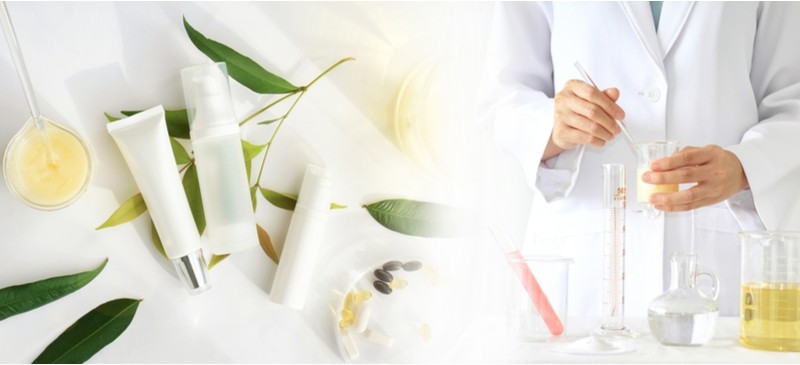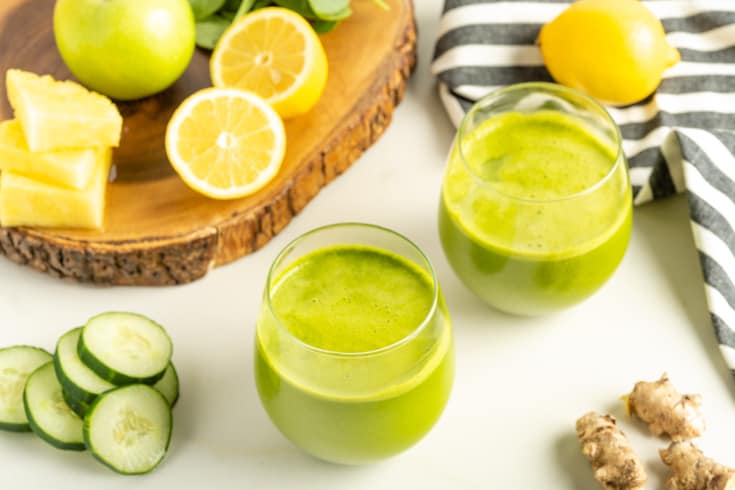This Dr. Axe content is medically reviewed or fact checked to ensure factually accurate information.
With strict editorial sourcing guidelines, we only link to academic research institutions, reputable media sites and, when research is available, medically peer-reviewed studies. Note that the numbers in parentheses (1, 2, etc.) are clickable links to these studies.
The information in our articles is NOT intended to replace a one-on-one relationship with a qualified health care professional and is not intended as medical advice.
This article is based on scientific evidence, written by experts and fact checked by our trained editorial staff. Note that the numbers in parentheses (1, 2, etc.) are clickable links to medically peer-reviewed studies.
Our team includes licensed nutritionists and dietitians, certified health education specialists, as well as certified strength and conditioning specialists, personal trainers and corrective exercise specialists. Our team aims to be not only thorough with its research, but also objective and unbiased.
The information in our articles is NOT intended to replace a one-on-one relationship with a qualified health care professional and is not intended as medical advice.
California Bans Chemicals in Beauty Products
October 26, 2020

According to findings from one study conducted by the Environmental Working Group (EWG), women living in the U.S use an average of 12 beauty products every day, containing nearly 200 chemicals, and it’s not always easy to know exactly what chemicals in beauty products you might find.
Chemicals are found in all type of cosmetics, skin care and personal care products, including makeup (lipstick, foundation and eye shadows), shampoos and other hair care products, body lotions and sunscreens.
As explained in an article published in The Guardian:
The US cosmetics and personal care industry is largely self-regulated. Since it first came under FDA purview in the 1930s, the industry has had only nine chemicals banned from use. More than 12,000 chemicals are approved for use today.
What chemicals should you avoid in beauty products? Potentially harmful chemicals in beauty products to steer clear of include:
- triclosan
- formaldehyde
- asbestos
- lead
- certain parabens and phytates
These are among 20 contaminants that have been recently banned in California and Connecticut, two states pioneering efforts in the U.S. to clean up the beauty industry.
The California Ban
Believe it or not, more than 40 nations have stricter cosmetic safety regulations than the United States, including a mix of both industrialized and developing nations. That’s not very surprising considering that the Federal Food, Drug, and Cosmetic Act hasn’t been changed since it was originally enacted in 1938.
There are an estimated 1,400 chemicals that have been used in beauty products in the past that are now banned in more than 40 countries. However, the U.S mostly lags behind, only having banned nine chemicals due to potentially dangerous effects, as well as some additional pesticides, narcotics and radioactive substances.
Recently, in response to growing concerns over their potential health impact, legislators in California banned chemicals in beauty products. New legislation will outlaw the use of 20 chemicals and contaminants that are considered the most dangerous among those used in cosmetics.
This makes California the first U.S. state to prohibit the use of these hazardous ingredients in the personal care industry. As Sen. Connie Leyva, who authored the bill, said, “SB 312 which will ensure that consumers in California know what ingredients are in the beauty and personal care products they bring home to their families and use on their bodies.”
A Connecticut state senator also introduced legislation that will hold cosmetic manufacturers to the same strict standards as those put forth by the EU.
According to recent findings, what chemicals in cosmetics are dangerous? Chemicals now banned in California for use in beauty, skin and hair care products include:
- Formaldehyde and formaldehyde releasers
- Dibutyl phthalate and diethylhexyl phthalate
- Mercury and related compounds, including thimerosal
- Isobutylparaben
- Butylparaben
- Propylparaben
- Toluene
- Triclosan
- Carbon black
- PFAS (per- and polyfluoroalkyl substances)
- Asbestos
- lead and related compounds
These chemicals have already been banned by the European Union, and by many other nations, but continue to be used in the U.S. legally.
Harmful Chemicals in Beauty Products
What are the most toxic beauty products? Here is a list of some harmful chemicals in beauty products that may be threatening your health right now:
- Triclosan —The FDA banned triclosan in liquid hand soaps due to concerns over endocrine disruption and development issues. However, it’s still found in some personal care products, such as mouth washes and soaps.
- Formaldehyde – This chemical is found in some keratin hair treatments, body soap and nail polishes and is a known carcinogen, yet in certain forms it’s still legally used in cosmetics.
- Toluene — This contaminant has been linked to reproductive and neurological dysfunction, yet it is found in nail polish and other cosmetics sold in the U.S.
- Coal tar – Found in some hair dyes and shampoos, this type of tar has been linked to eye-related concerns, such as irritation and possibly even blindness.
- Heavy metals (like lead) — Lead has been found in lipsticks and clay-based products and is known to be toxic in high amounts due to its effects on brain health and development.
- Phthalates — These are sometimes referred to as “endocrine-disrupting chemicals” because they seem capable of mimicking effects of human hormones, potentially leading to an increased risk of some cancers. You’ll find phthalates in hairspray, nail polish, perfume, lotions, shampoos and other products.
- Parabens — Found in shampoos, shaving creams and moisturizers, it’s speculated that parabens may contribute to skin-related issues and allergies.
- PFAS chemicals – The EWG found 13 PFAS compounds in 200 cosmetics and other personal care products sold in the U.S. These chemicals are also used in flame retardants and Teflon and may potentially contribute to issues such as cancer, along with reproductive and immune system harm.
Other potentially harmful compounds found in personal care products include:
- synthetic colors (derived from petroleum or coal tar sources)
- fragrances (which are sometimes associated with allergies and respiratory distress)
- toluene (which is also used to dissolve paint)
- Sodium lauryl sulfate or SLS (which can cause kidney and respiratory damage)
Risks and Side Effects
Why are chemicals in beauty products bad for you? The majority of commercially produced beauty and skin products contain multiple artificial colors, fragrances, preservatives and stabilizers that can easily be absorbed through the skin’s pores.
Some experts, although not all, believe that the use of chemicals on the body may be linked to health concerns including:
- Certain types of cancer, such as liver, thyroid and skin cancers, which are on the rise
- Infertility and changes to a woman’s menstrual cycle
- Allergies
- Thyroid conditions
- Diabetes
- ADHD
- Developmental issues in children
- Antibacterial resistance
That said, according to health authorities in the U.S., including the FDA and Centers for Disease Control and Prevention, it is not conclusive whether exposure to small amounts of chemicals in beauty products is a real concern.
They also cannot say for sure what harmful effects might result from slathering on a “cocktail” of different chemicals each day, which might turn out to be worse than use of only one contaminant.
The real issue seems to be that the U.S. lacks regulation over the cosmetic and beauty industry. The FDA does not require cosmetic products and ingredients to gain approval before they go to market, which increases the risk for contaminants such as asbestos and heavy metals to make their way into makeup, lotions and other products. (One example: Recently asbestos was found in dangerous children’s makeup products sold in the U.S. at Claire’s stores.)
Natural Alternatives
While it’s a good idea to start paying closer attention to the products you use directly on your skin, there isn’t need to panic. Even an attorney for the EWG admitted, “Most ingredients used in our day-to-day life are probably pretty safe.”
Although many chemicals can still be legally added to beauty products in the U.S., a number of major retailers, including CVS Health, Target, Rite Aid and Walgreens, have committed to restricting the use of many chemicals in their own cosmetic brands in the future.
If you’d like to take steps to avoid putting harmful chemicals in beauty products on your skin, you can try these natural skin care alternatives instead:
- Coconut oil — Moisturizes hair and skin, strengthens underlying epidermal tissue, helps removes dead skin cells, protects us from sunburns, and contains natural antibacterial, antiviral, antifungal and antioxidant properties.
- Tea tree oil — Works on the skin as a natural anti-inflammatory, antibacterial, antimicrobial and antifungal agent.
- Raw honey — Can help to reduce breakouts, provides moisturizing properties, contains antiseptic qualities, encourages wound healing, fights allergies and rashes, and may help reduce scars.
- Avocado — Rich in healthy fats that moisturize hair and skin, helps soothe sunburned skin, can boost collagen production, and can help treat dry hair and age spots.
- Argan oil — Can help heal irritations such as acne, bug bites, eczema, dryness, irritation and psoriasis.
- Lemon essential oil — Can help fight bacteria that causes acne, fade scars and age spots, exfoliate skin, brighten and lighten skin, tone oily skin, and fight wrinkles.
- Aloe vera — Helps soothe sunburns and fights inflammation, redness and itching.
- Apple cider vinegar — Acts as a natural toner, helps cleanse the skin and stop acne, and provides antifungal properties.
- Shea butter, almond oil and jojoba oil — Act as excellent moisturizers for dry skin types, are safe and inexpensive, and can help reduce flaking, redness or cracking and peeling.
Conclusion
- Although the U.S. lags behind in regulating the cosmetic and beauty industries, certain states in the U.S. are taking action.
- California legislators have introduced a ban of 20 of the worst contaminants found in cosmetics. What chemicals are banned in California? These include triclosan, formaldehyde, asbestos, lead, and certain parabens and phytates.
- What are harmful chemicals in beauty products capable of doing to you? Although it’s still up for debate, exposure to chemicals in beauty products may lead to higher risk for issues like cancer, infertility, thyroid problems, allergies and developmental issues.
- Read ingredient labels carefully, and try using natural alternatives instead, such as aloe, coconut oil, essential oils, shea butter, argan oil and apple cider vinegar.







